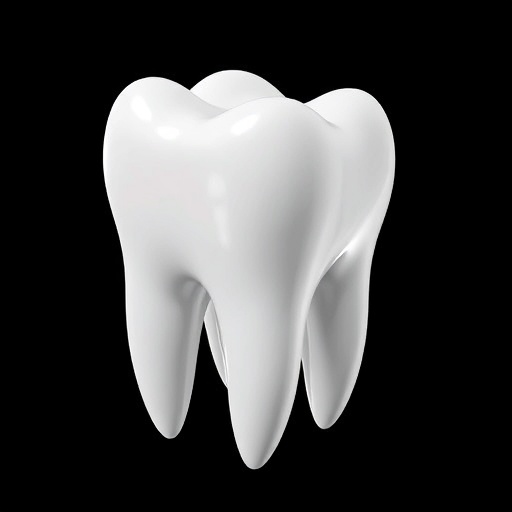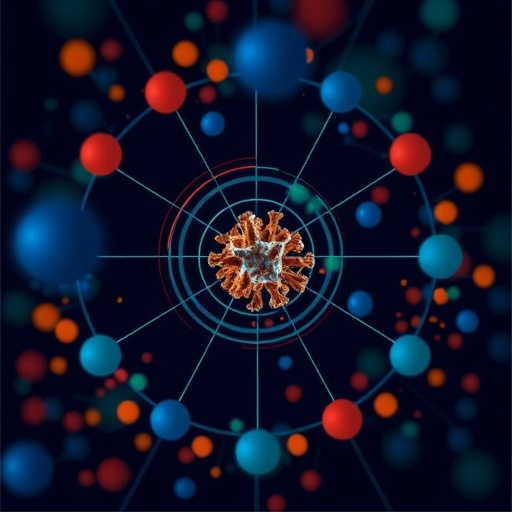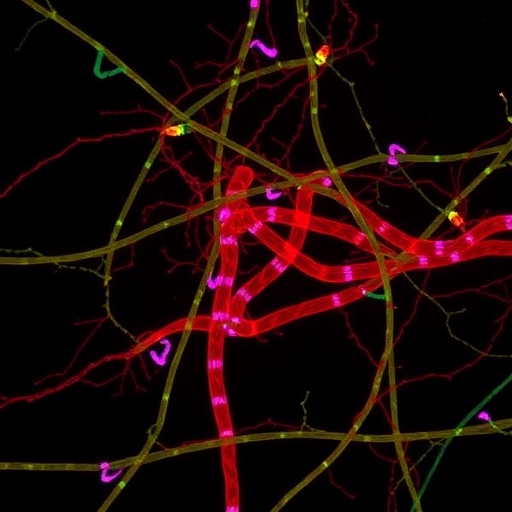Recent advances in dental technology are paving the way for more precise and effective treatments through innovations in artificial intelligence (AI) and machine learning. A seminal research paper entitled “Enhancing 3D Intra-Oral Tooth Segmentation Through Multi-Scale Graph Convolution Neural Networks and Cross-Domain Integration,” authored by Zhou, M., Zheng, H., Zhang, M., and colleagues, delves into the methodologies developed to significantly improve tooth segmentation in three-dimensional (3D) intraoral scans. This is an exciting development in the realm of dental diagnostics and treatment planning, encompassing numerous intricate technical details that highlight the capabilities of cutting-edge computational models.
Intraoral tooth segmentation has long been a challenging task due to the complex geometries and varying densities present within the dental anatomy. Traditional methods often fall short when tasked with differentiating between the diverse tissues present, including enamel, dentin, and pulp. To break through this limitation, the researchers employed a multi-scale graph convolutional neural network (GCN) model, reinforcing the adaptability and accuracy of the algorithm for real-world dental applications. The use of graph convolutional networks signifies a groundbreaking shift in how 3D structural data is interpreted, as they provide significant advantages in capturing local contextual information in association with long-range dependencies that traditional convolutional neural networks might overlook.
The researchers started their exploration by generating high-quality 3D intraoral scans using advanced imaging techniques. By transforming 2D x-ray data into comprehensive 3D models, they set the stage for deep learning algorithms that can analyze the data sets with unprecedented accuracy and speed. The transitioning from 2D to 3D scanning allows for a substantial enhancement in visual fidelity, which is critical for understanding complex spatial relationships within the teeth. The introduction of segmentation models utilizing GCN takes precedence in this endeavor as it capitalizes on the natural connectivity of data points, creating a more coherent model that reflects the intricate anatomical features of the teeth and surrounding soft tissues.
The methodology employed by Zhou and colleagues showcases a multi-scale approach, which allows the network to assimilate information at various resolutions. This multi-resolution analysis is vital in dental settings where the focus might shift from macro-level segmentation (entire tooth organization) to micro-level detail (pulp and enamel distinctions). By leveraging different scales throughout the segmentation process, the network becomes proficient in identifying smaller regions of interest while maintaining the overall integrity of tooth structure. This comprehensive view ultimately leads to more accurate diagnoses and treatment planning when considering complex dental diseases, such as caries and periodontal disease.
In tandem with the graph convolutional neural networks, the paper also emphasizes the notion of cross-domain integration. This aspect of the research is particularly compelling; it combines information from different sources, such as imaging results from different modalities. For example, merging data from intraoral scans with those derived from cone-beam computed tomography (CBCT) allows for a richer dataset for the models to train on. This cross-pollination between domains not only enhances segmentation accuracy but also reduces annotation workload, which is both time-consuming and resource-intensive in clinical settings.
With the advancements made in their methodology, Zhou et al. conducted a comprehensive evaluation against baseline models to substantiate the superiority of their approach. The results indicated a marked improvement in the segmentation performance metrics when employing the proposed multi-scale GCN model compared to traditional methods. Metrics such as Intersection over Union (IoU) and Dice coefficient illustrated the efficacy of their model in accurately delineating tooth boundaries, thus emphasizing the clinical relevance of their findings.
The implications of this research are vast and transformative. Improved tooth segmentation capabilities can significantly accelerate treatment workflows in clinical dental practice, leading to better patient outcomes. For instance, accurate segmentation can assist in planning complex dental surgeries, where precise 3D representations of anatomical landmarks are crucial. Furthermore, as AI continues to evolve, the integration of such sophisticated algorithms into everyday dental practice could herald a new era wherein dentists leverage AI-driven insights to augment their clinical decision-making processes.
The altruistic aim of this research extends beyond mere technological advancement; it directly addresses the fundamental need for improved diagnostics and treatment strategies within dentistry. As the global population ages, the demand for efficient care models and diagnostics will only continue to grow. Automation and intelligent systems capable of performing rapid and accurate analysis will be key to meeting these demands while reducing the burden on dental professionals.
Despite the promising results, Zhou and colleagues also note several challenges that remain in the field of dental imaging and AI. One significant hurdle is the need for vast, annotated datasets to train deep learning models effectively. In the context of dental radiography, acquiring such data can be limited due to privacy concerns and the inherent variability in radiographic interpretation among practitioners. Therefore, progressing towards a more standardized approach in data acquisition and annotation could facilitate the broader adoption of these technologies.
Moreover, the research points to the emerging importance of regulatory frameworks governing AI applications in healthcare. As dental practices increasingly incorporate AI into their workflows, it is imperative that safety, efficacy, and legal considerations be addressed comprehensively. Collaborations among educational institutions, clinical practitioners, and regulatory bodies will be essential in formulating guidelines that ensure patients are not only treated effectively but also ethically.
In conclusion, Zhou, M., Zheng, H., Zhang, M., et al. spearhead a transformative initiative within the dental field by enhancing 3D intraoral tooth segmentation through multi-scale graph convolution neural networks and cross-domain integration. Their work provides strong evidence that integrating advanced AI methodologies into dental imaging could significantly elevate the standards of care within the profession. As we stand on the precipice of a technological revolution in dentistry, it is essential that stakeholders remain vigilant and proactive in adopting such innovations that promise to enhance our understanding and treatment of oral health.
The uncharted depths of AI and machine learning within dental healthcare are only beginning to be explored. With detailed studies and ongoing research like that of Zhou and colleagues paving the way, the future of dental diagnostics and treatments looks not only promising but also profoundly exciting. As clinicians and researchers join forces in this arena, the potential to reshape dental health standards for generations to come can be realized.
Subject of Research: Enhancements in 3D intraoral tooth segmentation through advanced AI methods.
Article Title: Enhancing 3D Intra-Oral Tooth Segmentation Through Multi-Scale Graph Convolution Neural Networks and Cross-Domain Integration.
Article References:
Zhou, M., Zheng, H., Zhang, M. et al. Enhancing 3D Intra-Oral Tooth Segmentation Through Multi-Scale Graph Convolution Neural Networks and Cross-Domain Integration. J. Med. Biol. Eng. (2025). https://doi.org/10.1007/s40846-025-00963-2
Image Credits: AI Generated
DOI:
Keywords: 3D intraoral segmentation, graph convolutional networks, artificial intelligence, dental imaging, cross-domain integration, multi-scale analysis.
Tags: 3D tooth segmentationartificial intelligence in dental technologycomplex dental anatomy segmentationcomputational models in dentistrydental diagnostics advancementsgraph convolutional networks applicationsinnovations in tooth segmentation technologyintraoral scan analysismachine learning in dental treatmentmulti-scale graph convolutional neural networksneural networks in dentistryprecision in dental treatments






